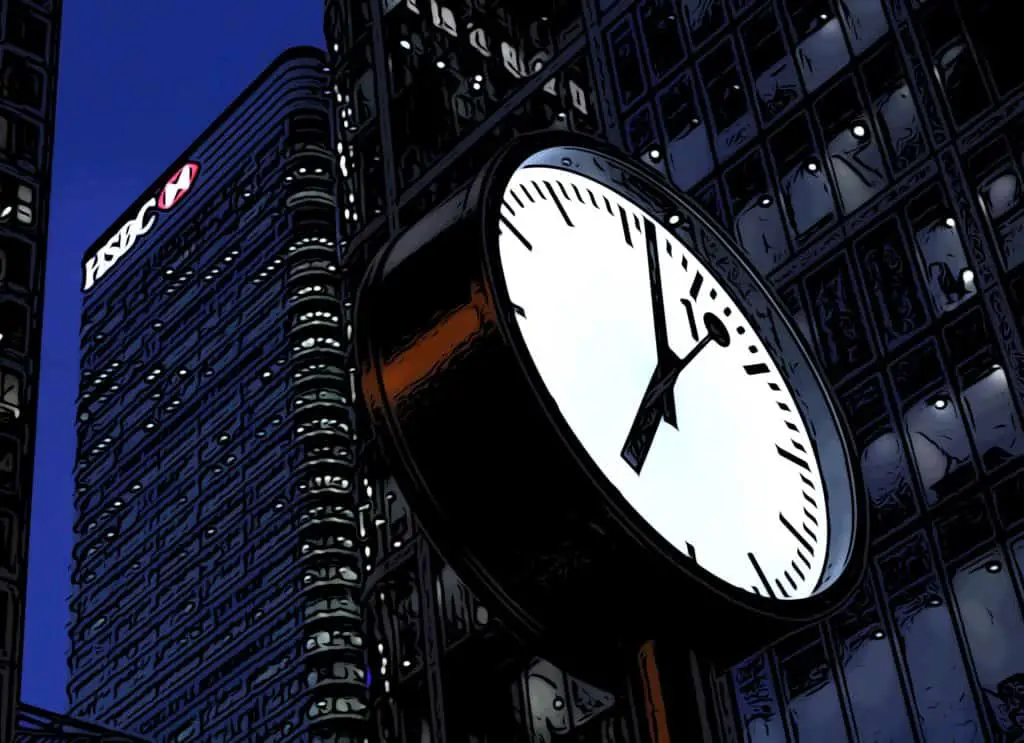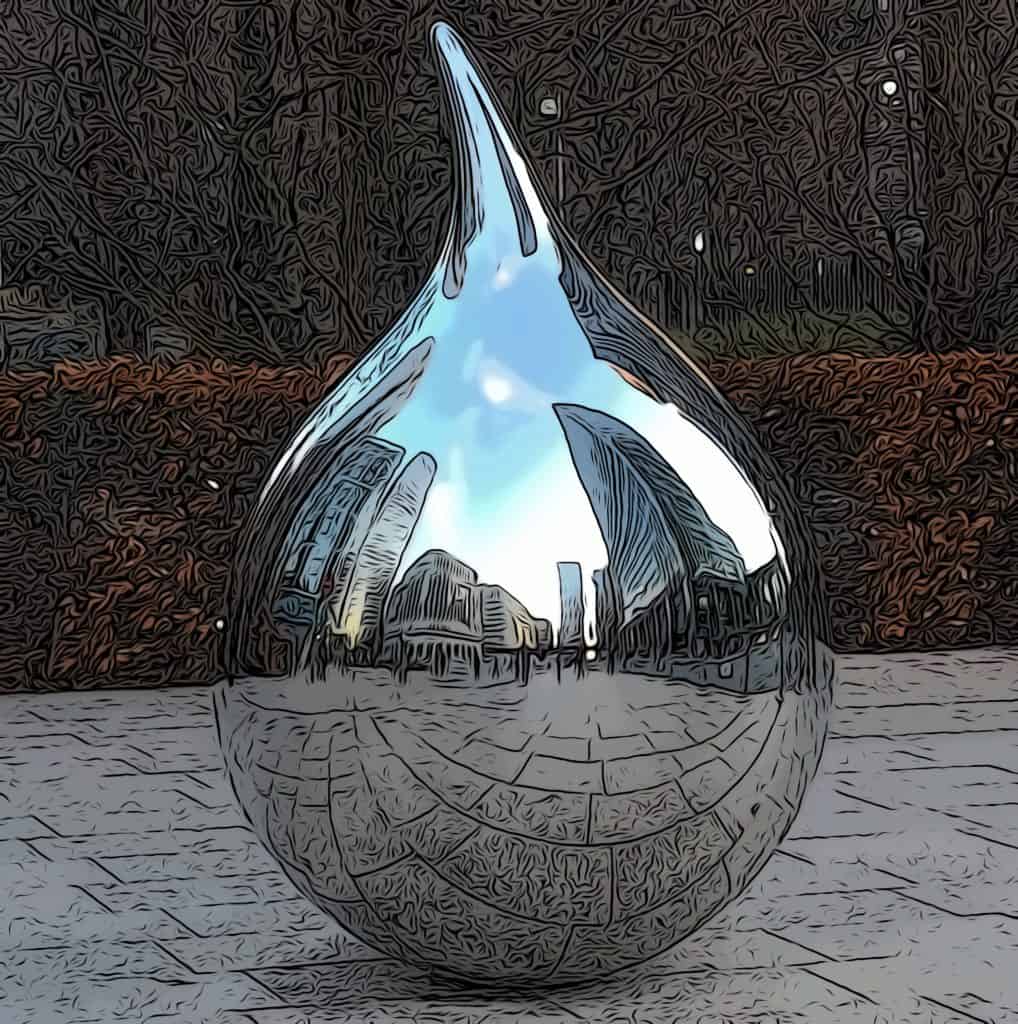Physical Address
304 North Cardinal St.
Dorchester Center, MA 02124
Change happens in Canary Wharf — fast!
Since the original 1985 masterplan for the disused area, development has continued relentlessly, and the area is hugely different to its docklands past.
Here are 12 Canary Wharf facts highlighting just how different the area is in 2021 compared to its past!
While Canary Wharf is known for being a financial hub, in recent years it’s rapidly expanded its provisions for tech workers. While a decade ago the area had a roughly 70:30 split between finance and tech workers, this all changed after the financial crisis as the group looked to diversify.
As of 2019, there were over 35,000 tech workers in Canary Wharf. In addition, for the first time there is now a 55:45 split between finance and tech/media companies among the office space.
There’s a whole host of tech and environmentally friendly features embedded in the Canary Wharf estate — the fountain at Cabot Square is computer-controlled and reduces in height in strong winds to not soak passers-by. However, in 2016 the estate got a green upgrade to help power all these gadgets.
The UK’s first solar-powered bus stop doesn’t have an array of solar panels on top, so you might not even notice it is there!
It is constructed out of special tinted photovoltaic glass, and the bus stop has been in action for the last 5 years. Even in wet and windy Canary Wharf, the high-tech solar bus shelter produces 1,347 kWh electricity per year according to the latest environmental reports.
London’s boroughs account for the 20 most densely populated areas in the UK. The highest population densities in the UK, of over 16,000 people per square kilometre, are found in the London Boroughs of Tower Hamlets and Islington.
Gov.UK — Population density
London being the most densely populated part of the UK will come as no shock. But a little known canary wharf fact is that the Canary Wharf ward is home to the most densely populated place in the entirety of the UK.
This is actually a small area by Millharbour. Sandwiched between three developments — Lincoln Plaza, Ability Place, and Maine Tower — estimates show this area’s population density is 106,716 people per square kilometre .
That is nearly 7 times more dense than Tower Hamlets as a whole!

Famous artwork is scattered around Canary Wharf

After a huge drive to improve the environment and clean up the local area in the aftermath of the industrial docklands, wildlife has slowly returned to Canary Wharf.
New developments near the historic docks, like The Quay Club in Middle Dock and Glengall Quay by Millwall Inner Dock, have been required to enact biodiversity plans before construction is allowed to begin.
This has lead to the estate supporting a surprising variety of wildlife:
5 bat species, a number of bird species, tufted ducks, mallards, terns and even home to our famous seal.
CWG — Environment Report 2020
The Thames now has a growing population of seals, and neighbouring Billingsgate fish market frequently reports seals swimming around the Canary Wharf docks.
While the Isle of Dogs has thousands of homes constructed, and more in the pipeline, the Canary Wharf private estate itself was purely commercial.
All that changed in 2020 with the opening of the first developments at Wood Wharf, a residential private estate constructed out of the docks next to Canary Wharf. This extension to the financial centre by Canary Wharf Residential is expanding rapidly, and set to house thousands in the future.
3,300 new homes, nearly 2 million sq ft of high-quality commercial office space, and a further 490,000 sq ft of shops, restaurants and community uses.
CWG — Wood Wharf
20 Fenchurch Street — more famously known as the Walkie Talkie building — sits in the heart of the City of London. However, it was actually constructed and owned by the Canary Wharf Group (CWG).
The £1.8 billion building — famous for it’s unique shape and melting cars — was actually developed and constructed by the group’s in-house commercial arm Canary Wharf Contractors.
The building completed in 2014, and was owned by the Canary Wharf Group for 3 years before being sold off in 2017.
While the clocks in Reuters Plaza are arguably the most famous Canary Wharf artwork — designed by Konstantin Grcic in 1999 — the estate has a growing collection of public artwork.
Canary Wharf now has over 75 pieces of sculptures and integrated architectural works, making it London’s largest outdoor art collection! Access to the Canary Wharf Art Trail is open to the public for free.
In addition, the estate hosts the famous Winter Lights Festival every year from early December to late February.
Canary Wharf’s One Canada Square lost its crown as the tallest building in the UK with the opening of The Shard in 2013.
However, there is a new residential development under construction, bringing the record-breaking heights back to Canary Wharf:
For comparisons to other areas of the UK and global cities, check out our article How Tall is Canary Wharf?
One little known fact about Canary Wharf is that the skyscrapers have a hidden secret from below. There are over 8,000 square meters of living roof space on top of the buildings. These green roofs are constructed out of sedum moss, and are rarely accessed by humans providing a sanctuary for wildlife.
This makes the Canary Wharf area home to the largest green roof space in the UK! This has helped to cool the buildings in summer — reducing the energy required to air condition them — and helped bring back Black Redstarts, a bird native to the area.
Over 120,000 people work in Canary Wharf every single day. However, the amount of jobs the site supports is over 3 times that!
With the wealth of infrastructure, shops, and facilities in Canary Wharf and across the Isle of Dogs, in 2021 it is estimated Canary Wharf supports 179,000 jobs on the peninsula. This equates to over half (54%) of all the jobs in the borough of Tower Hamlets.
Across the UK though, the Canary Wharf estate supports 398,198 jobs.
With an influx of residential development, and a growing working population, the number of shops in Canary Wharf has skyrocketed.
With the construction of Crossrail Place in 2016 — the estate‘s upcoming Elizabeth Line station — a wealth of new retail facilities arrived alongside the famous roof garden.
In 2021 there are now 5 separate shopping malls, 300 + shops, restaurants and bars, and the largest Waitrose in the UK!
Aiming to hit environmental targets and help clean up the waterways, Canary Wharf have followed in the footsteps of Portsmouth marina, becoming one of the first places in the UK to install sea bins.
Designed by surfers, sea bins sit on the waterline and suck in any rubbish helping to remove contaminants and improve water quality.
The sea bin in Canary Wharf sits in Middle Dock and raises and lowers with the tide, scooping in plastic and rubbish, before it is emptied weekly by the team.
The new Sea Bin collects 30 kg of plastic a month from the waterways at Canary Wharf
SAS — Breaking the plastic habit